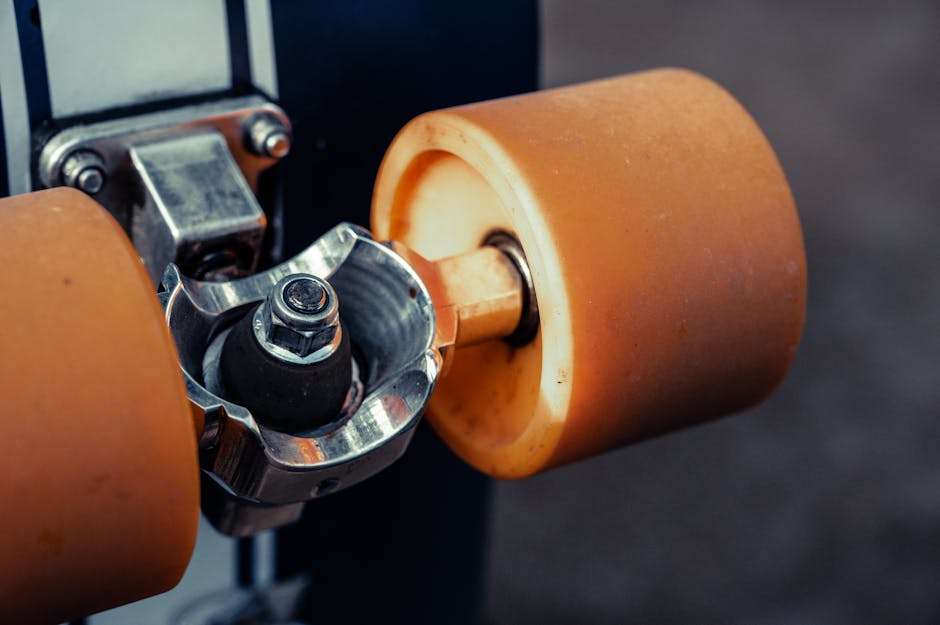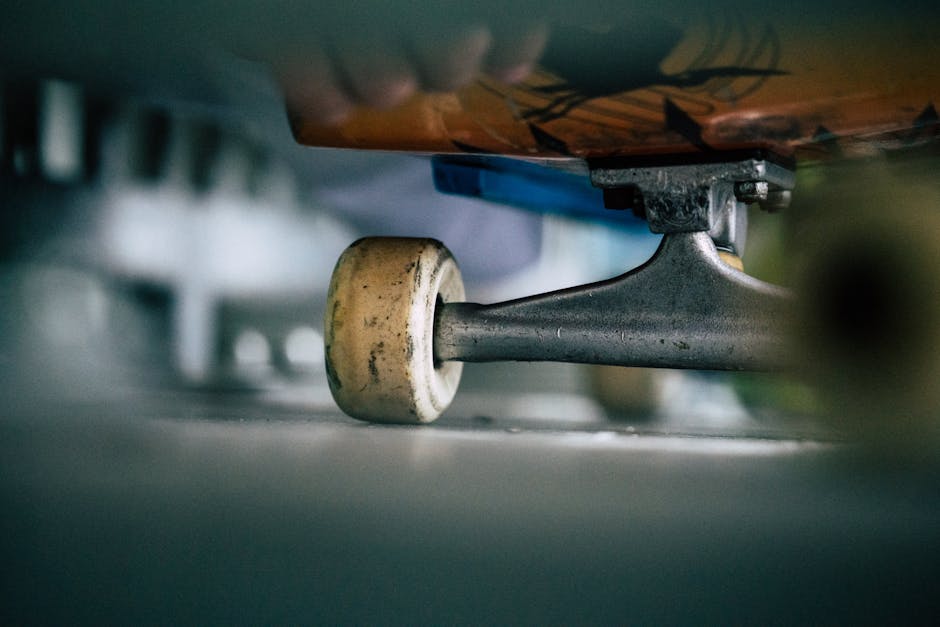Electric skateboards are transforming how we move through urban landscapes, combining leisure and utility in an eco-friendly package. The heart of an electric skateboard’s performance lies in its wheels, where factors such as size, material, and design play pivotal roles. This exploration aims to unlock the secrets behind wheel size and its profound effects on speed, maneuverability, and stability, providing insights that can help riders customize their experiences for optimal enjoyment and efficiency.
Understanding Wheel Size Impact
“`htmlUnderstanding the Impact of Wheel Diameter on Electric Skateboard Speed
Electric skateboards have become a popular mode of urban transportation and leisure activity. One key component affecting their performance is the wheel diameter. But how exactly does wheel diameter influence the speed of an electric skateboard? Let’s break it down clearly and concisely.
Wheel Diameter ExplainedThe diameter of a wheel is the distance across its widest part. For electric skateboards, this measurement is crucial because it directly impacts how fast the skateboard can go. Wheels come in various diameters, typically measured in millimeters (mm).
Impact on SpeedThe general rule of thumb is: larger wheel diameters result in higher top speeds. Here’s why:
- Rotation and Distance: A larger wheel covers more ground per rotation compared to a smaller wheel. When the motor turns the wheels, a bigger wheel will propel the skateboard forward a greater distance with each rotation, increasing its speed.
- Efficiency: Larger wheels can reduce the energy lost in overcoming obstacles or uneven surfaces. This efficiency means less power is needed for maintaining speed, indirectly contributing to a faster ride.
- Gear Ratios: The connection between the motor and wheels (through gears or pulleys) also plays a part. A larger wheel may require adjustments to this ratio to optimize performance. Such tuning ensures the motor’s power is effectively translated into speed.
While larger wheels promise faster speeds, there are trade-offs:
- Acceleration: Smaller wheels tend to offer better acceleration because they require less torque to start moving or change speeds.
- Maneuverability: Larger wheels might make the skateboard less agile. Tight turns and quick stops could be more challenging.
- Compatibility: Not all skateboards may accommodate larger wheels due to design constraints. Check the manufacturer’s specifications before upgrading.
In conclusion, wheel diameter is a critical factor in determining the speed of an electric skateboard. Larger wheels can enhance top speed, making for a swift ride, but remember to weigh the pros and cons based on your needs and skateboarding style. Whether you prioritize acceleration, speed, or agility, understanding the role of wheel diameter can help tailor your electric skateboard to your preferences.
“`
Photo by clintmckoy on Unsplash
Wheel Material and Performance
When delving into the nuances of electric skateboard performance, wheel material emerges as a critical factor influencing speed beyond diameter, gear ratios, and other considerations previously discussed. The choice of wheel material can significantly affect the board’s rolling resistance, traction, and overall durability—each playing a pivotal role in speed optimization and rider experience.
Rolling Resistance and Speed
:Rolling resistance, simply put, is the energy that your electric skateboard needs to overcome to maintain motion. Wheels made from softer materials, like polyurethane, offer a smoother ride by absorbing vibrations and imperfections on the road. However, this absorption comes at the expense of increased rolling resistance, which can slightly reduce top speed. Conversely, harder materials might offer less vibration absorption but can decrease rolling resistance, subtly enhancing speed.
Traction and Control
:The material’s grip on the surface directly impacts how well the skateboard accelerates and brakes. Softer wheels provide better traction by conforming more closely to the surface they’re rolling on, offering increased control at higher speeds or in wet conditions. This means that while the initial acceleration might be slightly slower compared to harder wheels, you gain more predictable control, which is crucial for maintaining higher speeds safely.
Durability and Longevity
:The durability of the wheel material affects not just the lifespan of the wheels but also long-term speed performance. Softer materials tend to wear down faster than harder alternatives, especially when frequently ridden on rough surfaces or at high speeds. As wheels wear down, their diameter can decrease, indirectly affecting speed due to changes in rotation dynamics previously mentioned. Therefore, choosing a wheel material that balances durability with performance needs can ensure consistent speed over time.
In sum, while wheel diameter and gear ratios are foundational to understanding electric skateboard speed, the material of the wheels adds another layer of complexity, impacting rolling resistance, traction, and durability. Riders seeking to optimize their electric skateboard’s speed must consider how the wheel material will influence these factors under their typical riding conditions. Whether prioritizing a smoother ride with softer wheels or aiming for slightly higher speeds with harder materials, informed choice can enhance the electric skateboarding experience.

Balancing Speed with Board Stability
Adjusting Skateboard Wheel Size for Optimal Stability: A Guide
Whenever skateboard enthusiasts think about upgrading their ride, increasing the wheel size often pops up as a tempting option. Larger wheels offer the allure of heightened speed and the potential to smooth out rougher terrains. However, one significant concern that arises with this decision is whether board stability can be maintained or even improved in the process. Here’s a straightforward exploration into managing wheel size adjustments without compromising your skateboard’s stability.
Understanding Wheel Hardness and Material
Before delving into size, it’s imperative to consider wheel hardness and the material composition. The hardness, measured on the Durometer scale, affects grip and ride smoothness. Softer wheels, typically rated lower on the scale, provide more grip and absorb road vibrations better, making them ideal for stability on uneven surfaces. On the other hand, harder wheels offer less friction and might seem less stable but are perfect for smooth skate parks. Choosing the right material, usually polyurethane, can ensure durability and consistent performance, which contributes to overall board stability.
Wheelbase and Truck Compatibility
The wheelbase—the distance between your skateboard’s trucks—affects how wheel size impacts stability. A longer wheelbase can accommodate larger wheels more readily, providing a more stable and comfortable ride, especially at higher speeds. It’s important to assess your board’s wheelbase before deciding on a wheel size upgrade to ensure compatibility and to avoid wheel bite, where the wheel touches the board during a turn or trick, potentially causing a fall.
When considering larger wheels, also evaluate your trucks’ clearance and adjust them if necessary. Riser pads may be added between the trucks and the skateboard deck to increase clearance, allowing for larger wheels without the risk of wheel bite. This adjustment not only prevents accidents but also enhances stability by keeping the ride smooth and uninterrupted.
Balancing Stability with Riding Style
Your riding style plays a pivotal role in selecting the appropriate wheel size. For those who favor street skating, smaller wheels provide closer ground contact for tricks and flips, ensuring stability during technical maneuvers. In contrast, longboarding or cruising demands larger wheels for stability over longer distances and varied surfaces. Hence, incrementally increasing the wheel size, based on your primary skateboarding discipline, can enhance stability relative to your specific needs.
Practical Steps and Testing
- Assess your current setup: Examine your skateboard’s overall condition, focusing on the wheelbase and truck height.
- Select the right wheel hardness and material: Based on your riding environment and style, choose wheels that offer a balance between grip and durability.
- Consider riser pads for larger wheels: If going for a significant increase in wheel size, riser pads can be a practical solution for preventing wheel bite.
- Test in controlled environments: Before hitting challenging terrains, test your new setup in a safe, controlled area to adjust to the feel and response of larger wheels.
By following these guidelines and making thoughtful adjustments, skaters can successfully increase their skateboard’s wheel size without sacrificing the essential element of stability. This careful approach ensures a balance between the thrill of speed and the assurance of a secure, enjoyable ride.

Mastering the intricacies of electric skateboard wheel specifications can significantly elevate your riding experience, enabling a fine-tuned balance between speed and stability that suits individual preferences and styles. By considering wheel diameter, material, and adjustments for improved stability, skateboarders can achieve a ride that feels not only thrilling but also secure and well-suited to their skateboarding activities. As we delve deeper into understanding these critical components, the ability to adapt and optimize our electric skateboards becomes a valuable tool in enhancing both performance and enjoyment in our skating pursuits.

